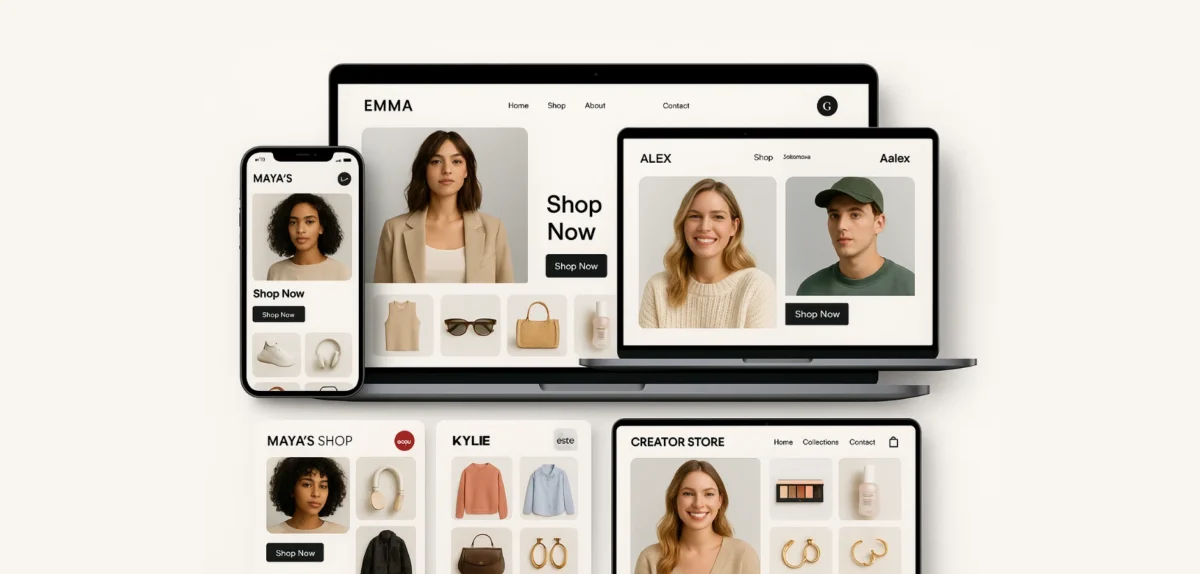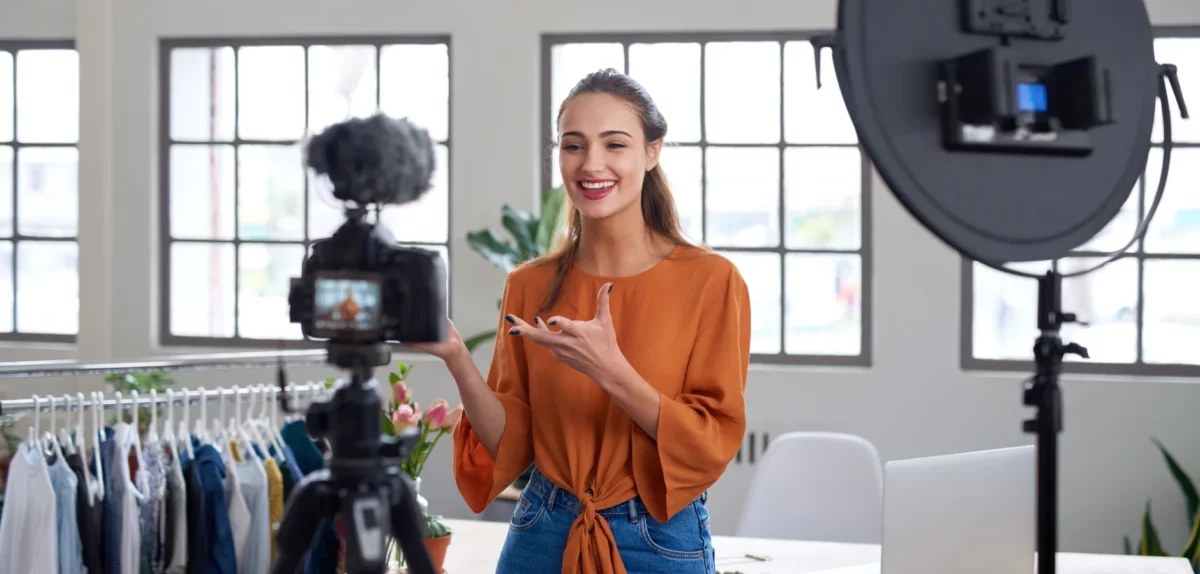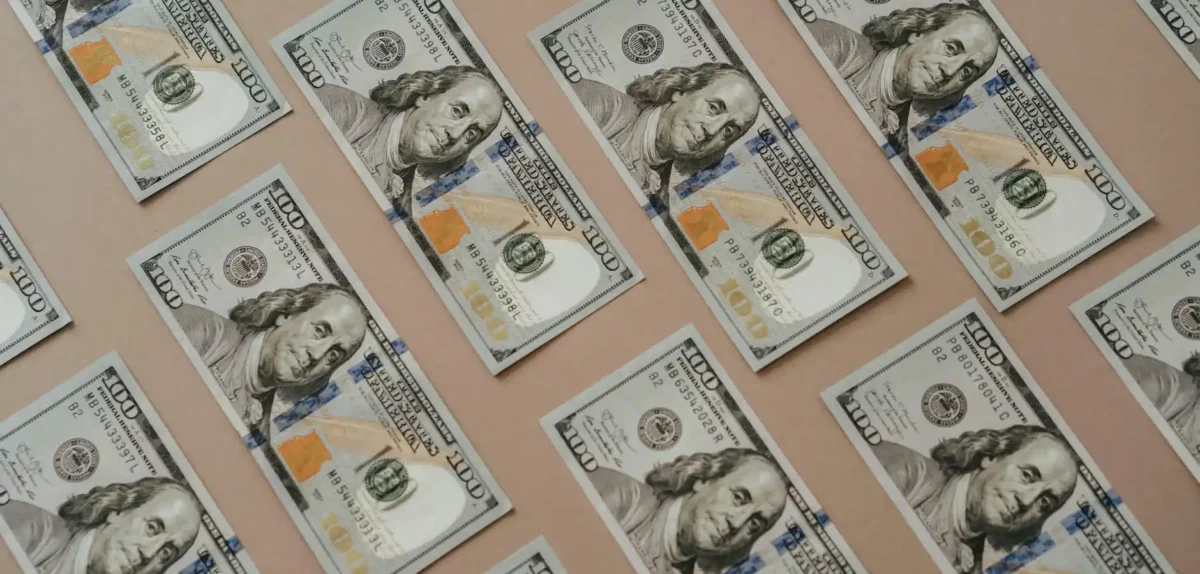So, you’ve found some traction as a creator. Posts are going viral and fans are jumping on board. Maybe you’ve even wrangled a few brand partnerships.
But there’s a hurdle standing between you and long-term success: scaling up brand collabs and income streams.
With over 200 million creators worldwide, there’s stiff competition for collabs. You must set clear expectations and negotiate with brands to earn what you’re worth in this market. Too many creators miss better paydays because of low rates, unclear services, and fuzzy contract terms.
If you want to level up your brand deals and earn more, create the perfect influencer rate card.
Some people see a rate card as a fixed menu of rates and services for brands. But it can be a powerful tool in the right hands—highlighting your worth and negotiating the best deals with brands.
Your rate card is a payment conversation starter
A carefully curated rate card shows potential partners how you can help them smash their marketing goals (and how much they need to pay to access your skills).
Consider it a jumping-off point when chatting with brands—not the final say. Your rate card should show your base commission rates to brands and be a consistent point of reference for yourself.
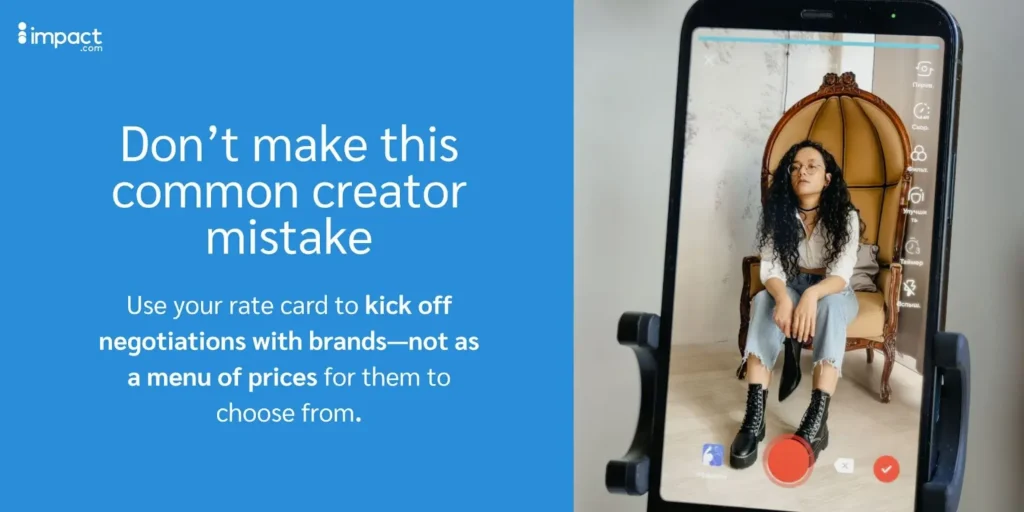
A common mistake creators make is asking brands to pick a service from the rate and then jumping straight into discussing contract terms. This approach locks you into generic pricing before understanding the project’s full scope.
Instead, frame your rate card as a listing of base rates that can guide negotiations with the brand. No matter how great the opportunity, you don’t want to move too fast and sell yourself short.
When you correctly use a strong rate card, you enter brand talks as a pro content creator—and can get better deals and pay along the way.

Download impact.com’s rate card template to design a card that will advance your brand deal negotiations.
Media kit vs rate card: understanding the difference
If you already have an awesome media kit, why bother with a rate card? Well, they serve different purposes—even if there’s some overlap.
Media kits are useful for pitching brands, but rate cards are useful when you’re a little further into partnership discussions.
Here’s the full breakdown:
Media kits sum up your story, style, and content, introducing you to brands who may have never heard of you. It acts as your professional portfolio, showcasing your previous collabs, audience demographics, and unique value to potential brand partners.
You design a media kit to pique brand interest and show how teaming up with you can produce real results.
Rate cards focus on negotiations rather than introductions. Your media kit has opened the door to collaboration—and now your rate card steps in to spark meaningful discussions about specific projects and pricing.
Your rate card will have a list of services and base rates, but it may also show engagement metrics, audience size, and more to back up your pricing. Instead of giving an introductory overview (such as your media kit), a clear rate card drives home why you’re worth every penny.
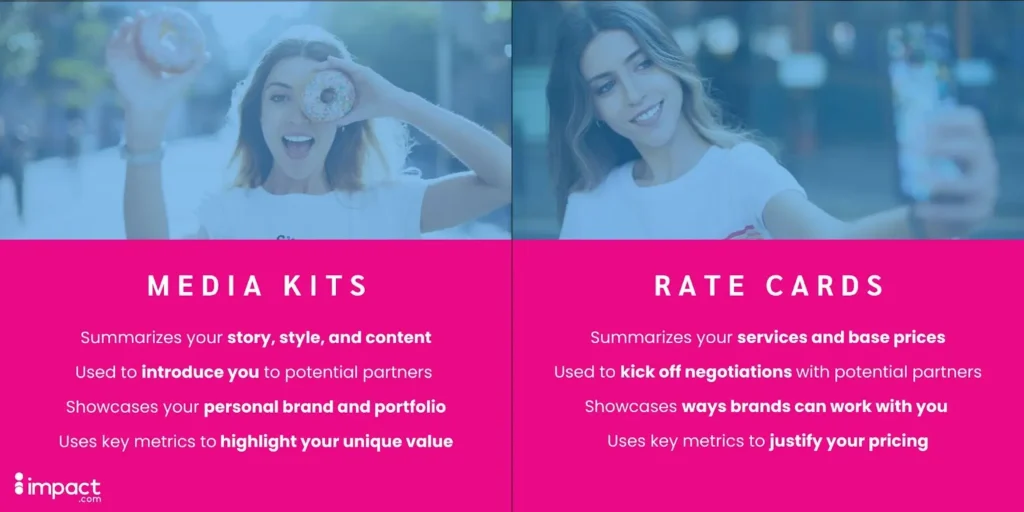
5 crucial steps for creating (and updating) your rate card
A thoughtfully crafted rate card will help you stay competitive with industry norms to access better opportunities and grow your income.
So, let’s nail down the nitpicky details of creating your rate card and keeping it fresh. Keep these five steps in mind.
1. Breakdown your services
Before diving into creating your rate card, take a moment to plan out all the details you want to include. Getting this done in advance ensures you’ll have everything sorted out when you’re ready to design your card later.
Grab a pen and paper, or open a new Google doc. This will be your space to lay out all the information you want to include.
Start by defining the types of posts, reels, or longer videos you want to provide. There are many ways for creators to make money, but you should consider what makes you unique.
Content creators don’t need to master everything—so customize your list of services around your strengths. This is especially important when it comes to user-generated content (UGC).
For example, you could center your services around your top-notch cinematography or writing skills. Or, focus more on hands-on demos and product breakdowns.

Try adding extra options for partners, such as in-person events or extended campaigns.
Plus, consider what content works best in your niche. You want to offer services and content types that:
- Engage your audience to boost brand awareness
- Increase purchase intent to raise brand revenue
The more effectively your content can help brands meet their goals, the more you can charge.
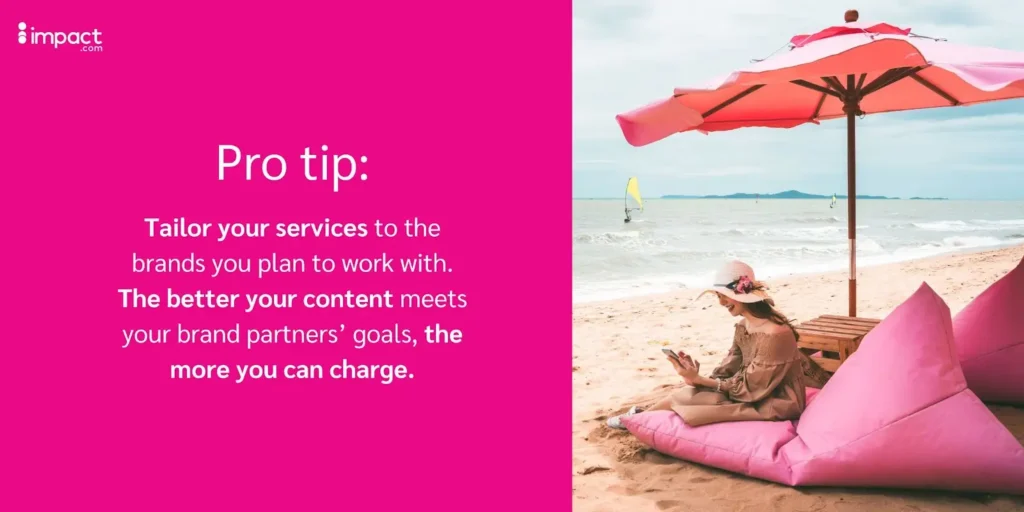
2. Outline your baseline rates and terms
With your list of services in hand, start determining your rates. These prices aren’t just for brands—you can also use them as a baseline for yourself during negotiations.
Think about how you like to get paid first. Do you prefer a flat fee or getting commissions based on engagement? This helps you know what kind of pricing models you’ll want to look into.
Then, consider how you want brands to collab with you. For instance, if you prefer to develop long-term relationships with brands, you may want to offer a small discount for ongoing campaigns vs one-time posts. Getting a handle on this will help you figure out if including discounts in your packages or deals is a good idea.
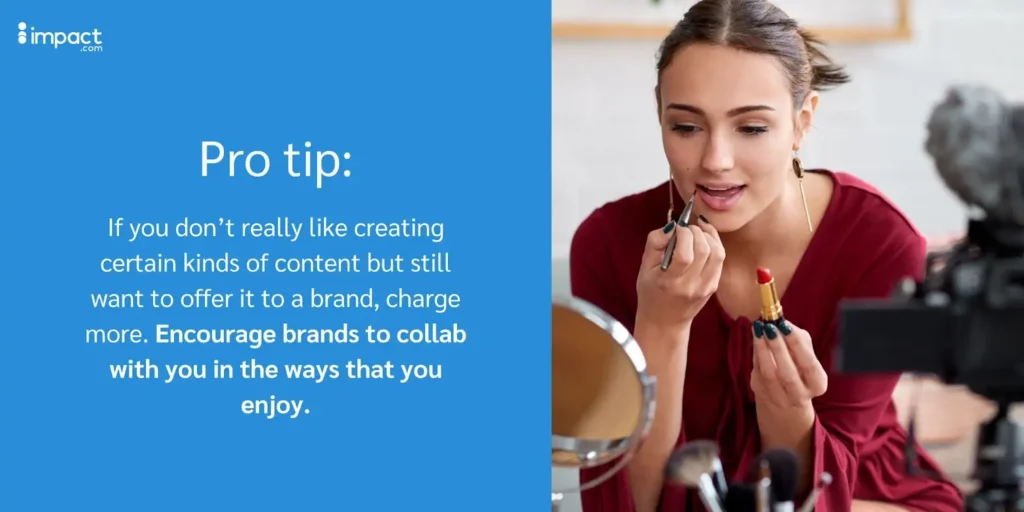
Now, start researching what prices make sense for you and your niche. Take your time. There are a lot of different things to look into when setting your prices, but here’s a few ideas:
- Check with other creators in your niche
- Dig deeper to get to know your target audience and the kind of brands you want to work with
- Study what influencers typically charge and the pricing models of successful creators using online platforms, industry reports, and social media discussions
By comprehensively understanding your niche and ideal brand partners, you can refine your pricing strategy effectively and stay competitive.
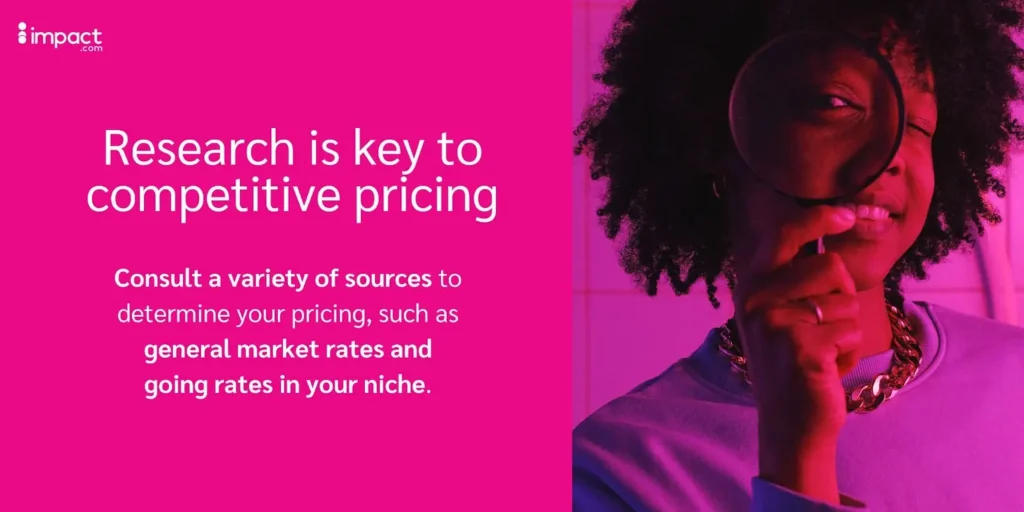
Once you’ve researched and landed on some solid numbers, add your base pricing to each service or package in your doc.
Thankfully, these prices aren’t set in stone. Your baseline rates will change based on rush fees, usage rights, production costs, and any other factors you want to include on your rate card.
3. Pull key audience and engagement metrics
Before you start designing your rate card, you must consider how to justify your base rates to brands.
Many rate cards include key metrics that remind brands of your value, such as:
- Audience size
- Engagement rate
- Average reach
- Average impressions
- Notable brands you’ve worked with
You don’t have to dive deep into all your metrics like in a media kit, but sharing a few key stats shows brands why you’re worth the cost.
Remember the type of brands you’ll work with most and which numbers will resonate with them.
Capture the metrics you’ve decided to highlight in your doc.
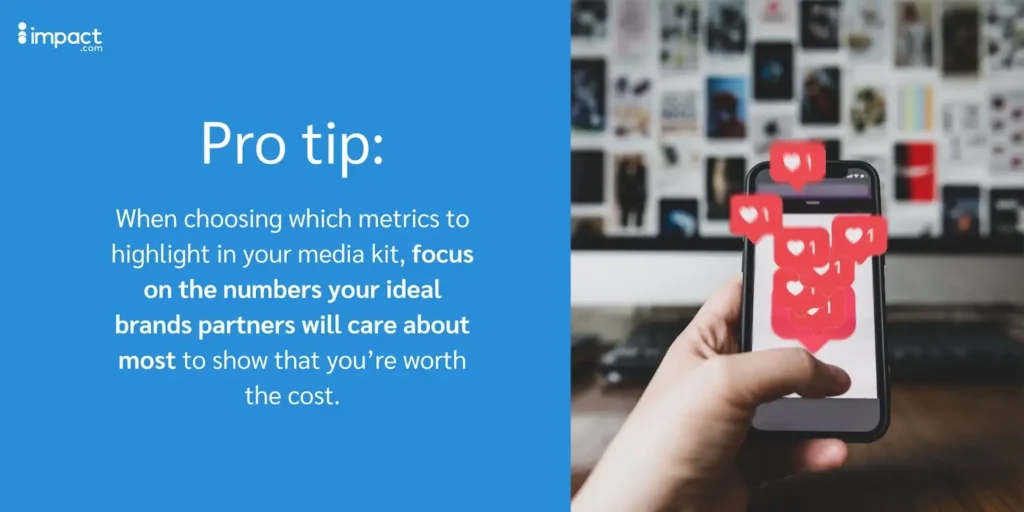
4. Design a clear and concise rate card
Now, you can move on to the best part: bringing your rate card to life!
You have all the details you need in your document where you’ve jotted down the metrics, services, and base prices. Now, let’s present this info on a fully designed rate card that matches your personal brand.
Giving brands a well-organized, professionally designed rate card boosts your credibility as a creator. It signals to brands that you’re a pro—and your pricing reflects that.
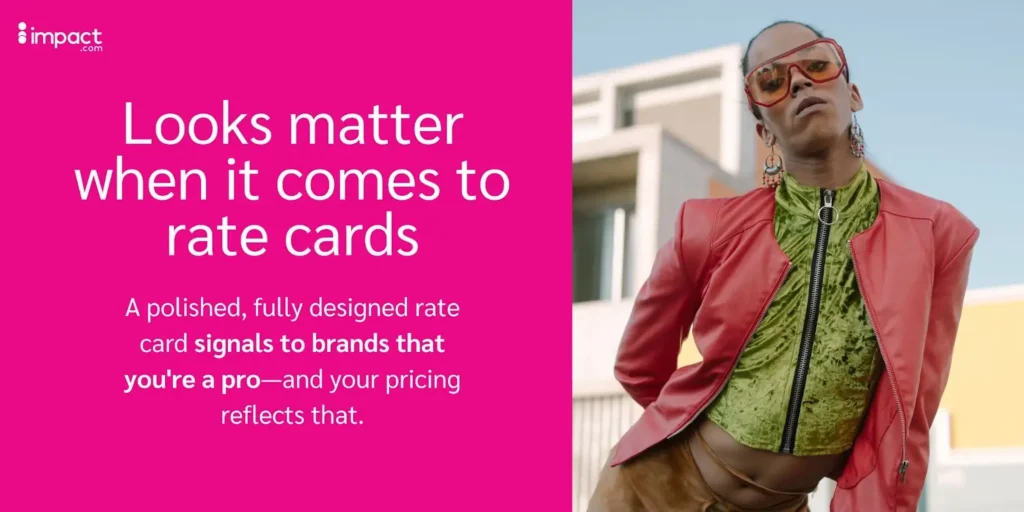
Thankfully, you don’t need to reinvent the wheel here. Partnership experts at impact.com crafted a customizable rate card template that gives you a place to start.
You can also use other design tools such as GIMP, Photoshop, or Canva to create your own.
5. Keep updating and refining over time
After designing your rate card, keep it updated as you move from project to project.
Maybe you don’t want to offer that service package again. Or, you want to lean into different types of content (such as gift guides or TikTok shorts). New trends might boost content formats—and change what you want to focus on.
But what exact details are you updating? Here’s how to keep your card fresh:
- Keep tracking your time with each new project. Your workflow will change as you level up your production value or take on new challenges, so don’t undervalue yourself with outdated timelines and prices.
- Update your services and skip unpopular options. Try adding new options, dropping content types you dread, and clearing out rarely-used services and bundles.
- Raise your rates as you improve. As you learn more, ensure your prices reflect your growth and don’t undersell yourself: streamlining your workflow doesn’t mean you need to charge less.
FAQs
Rate cards are valuable tools for creators during negotiations. Rate cards highlight prices and options for posts, videos, reels, blogs, events, and more—showcasing your strengths and baseline rates for brands.
Influencers tend to make more on TikTok and YouTube than on platforms such as Facebook. But this changes with social media trends, typical ad rates, and how much money platforms share with creators over time. Staying current with these trends will put you ahead of other creators and keep your pricing competitive.
Engagement massively impacts what influencers can charge. Brands want to know that audiences are responding to posts and reels. They determine this by tracking likes, shares, comments, and more.
Social media trends and algorithm shifts also affect prices—changing what content has the widest reach and returns for brands. Staying on top of what’s hot on social and in your niche will help you stay competitive.
Putting your influencer rate card to work
Kick off your relationships with brands the right way. Use a clear influencer rate card to prove your worth and set yourself up for lasting success as an influencer for top brands.
Now that your new rate card is ready, it’s time to connect with potential brand partners. With impact.com / Creator, you can easily handle communication and negotiation all in one place. You can be transparent about timelines, desired results, and critical engagement metrics to track.
Sign up for impact.com / Creator today.
Want to learn more about landing brand deals? Check out these articles:



